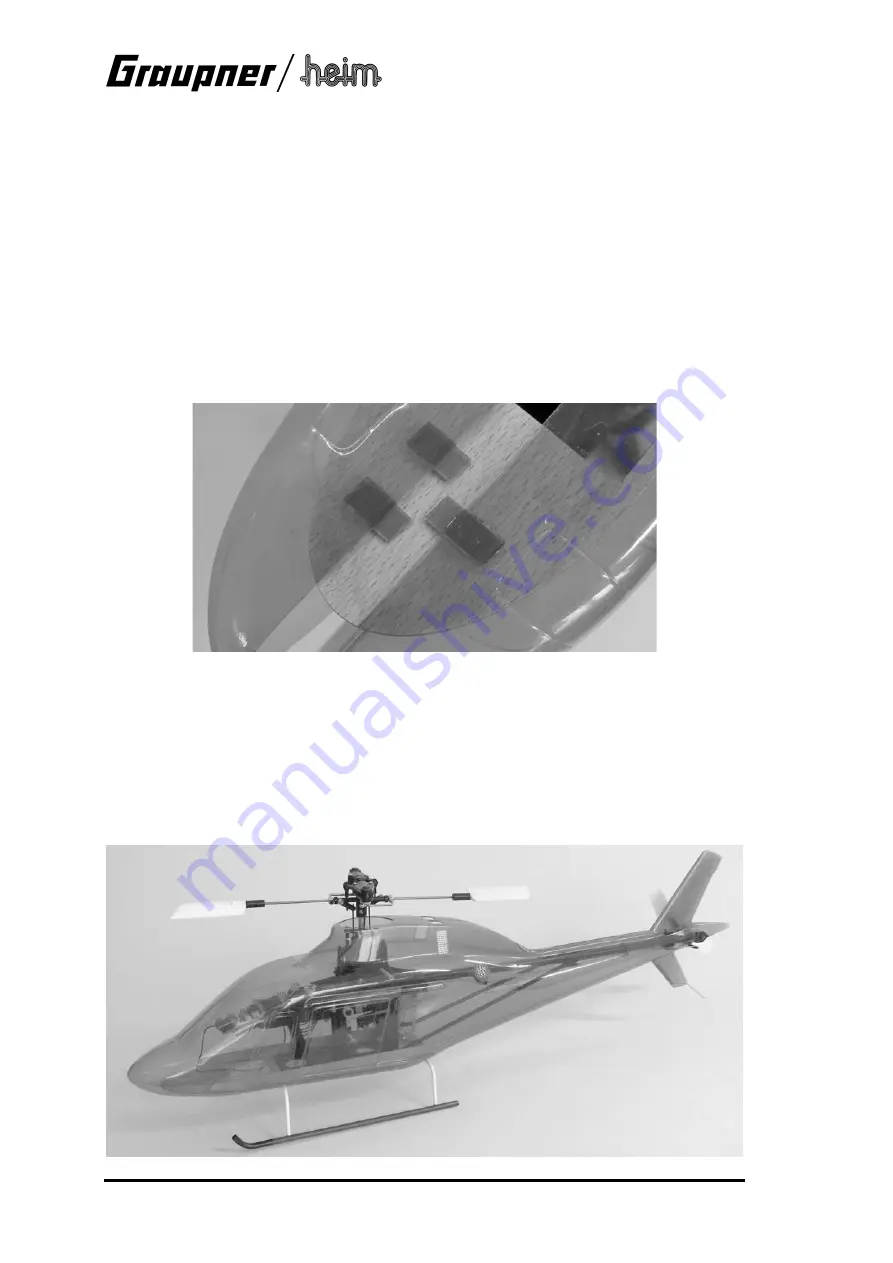
Agusta A119 Koala
12
When you are confident that everything lines up correctly and is held securely in place, the rear
part of the shells can be glued together in the following areas only:
•
The top of tail boom along the shaft tunnel, then forward and up to just aft of the main rotor
shaft;
•
The whole of the upper vertical stabiliser;
•
The whole tail cone;
•
The whole of the bottom vertical stabiliser.
Do not allow the glue to run onto other areas, otherwise it may be impossible to install
the mechanics when you have finished!
Remove the strips of tape when the glue has set hard. Cut narrow strips of scrap plastic and cut
them into short pieces as shown. Glue these small rectangles along the joint line in the front
section of the fuselage, fitting them in groups of three to form locating tongues: in each case
glue two pieces on the inside of one shell, with a third strip between them on the other side (see
photo). Roughen all joints with abrasive paper before applying the glue.
Final trimming of the fuselage shell
Gently spread the fuselage shells on the underside so that the chassis can be installed from un-
derneath. When you do this it is important to ensure that the tail rotor pushrod exits the fuselage
through the appropriate opening. Check that the fuselage shell is a snug fit all round the chassis
when the shells are held together with a few strips of adhesive tape: the openings at the bottom
should be a close fit round the skid bars, but without placing the fuselage under strain. Check
that the main rotor is free to rotate without any danger that the swashplate, pushrods or other
linkage components could foul the fuselage.




































